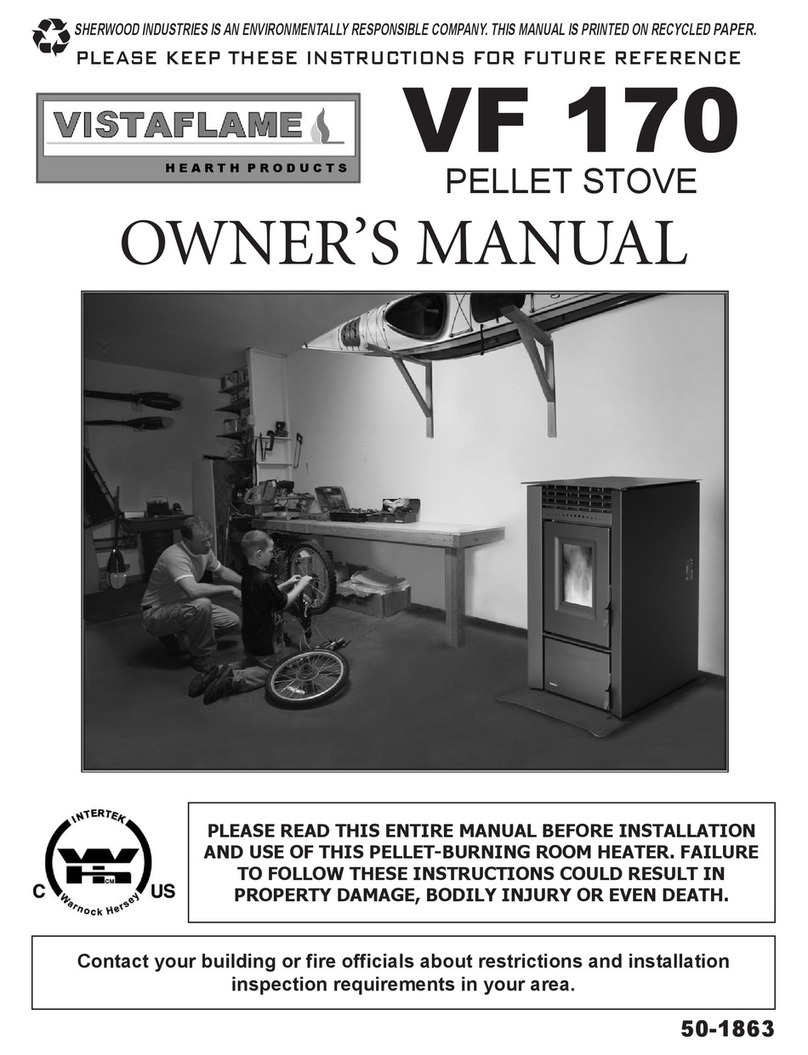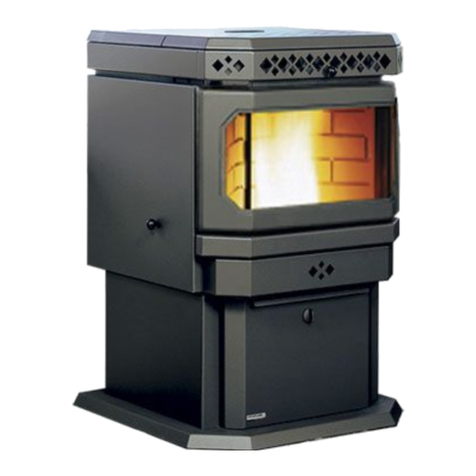
Table of Contents
2
Introduction..............................................................................................................................3
Rating Label Location......................................................................................................3
Pellet Quality..................................................................................................................3
Important Safety Data....................................................................................................4
Safety Warnings And Recommendations...........................................................................4
Specifications...........................................................................................................................6
Dimensions - Freestanding..............................................................................................6
Dimensions - Insert........................................................................................................6
Operating Instructions...............................................................................................................7
Control Board Functions..................................................................................................7
Operating Your Pellet Stove.............................................................................................7
Turning Your Pellet Stove Off...........................................................................................8
Slider/Damper Set-Up.....................................................................................................8
Guidelines For Fine-Tuning For Fuel Quality.......................................................................9
Routine Cleaning and Maintenance...........................................................................................10
Installation.............................................................................................................................13
Deciding Where to Locate your Pellet Appliance..............................................................13
Automatic Safety Features of Your Pellet Stove................................................................13
Removing Pellet Stove From Pallet.................................................................................13
Installation Of Pedestal - Insert......................................................................................14
Clearances to Combustibles - Freestanding.....................................................................15
Clearances to Combustibles - Insert...............................................................................15
Clearances to Alcove - Freestanding...............................................................................15
Outside Fresh-Air Connection.........................................................................................16
Exhaust And Fresh Air Intake Locations.........................................................................16
Vent Termination Requirements.....................................................................................17
Mobile Home Installation - Freestanding.........................................................................18
Corner Through Wall Installation - Freestanding..............................................................18
Horizontal Exhaust Through Wall Installation - Freestanding............................................19
Through Wall With Vertical Rise and Horizontal Termination Installation - Freestanding......20
Inside Vertical Installations - Freestanding......................................................................21
Outside Vertical Installations - Freestanding....................................................................21
Hearth Mount Installation - Freestanding........................................................................22
Masonry Fireplace Installation - Fireplace Insert..............................................................23
Installation Into Factory Built Fireplaces.........................................................................25
Installation of Control Panel into Surround Panel - Insert.................................................25
Installation and Removal of The Surround Panels - Insert................................................26
Thermostat Installation.................................................................................................27
The Tube Scraper Rod...................................................................................................27
Slider/Damper Installation.............................................................................................27
Troubleshooting......................................................................................................................28
Wiring Diagram.......................................................................................................................31
Parts List................................................................................................................................32
Parts Diagram - Components....................................................................................................35
Parts Diagram - Steel...............................................................................................................36
Warranty.................................................................................................................................37
Installation Data Sheet............................................................................................................40





























